The cost of wood shop organization
For Mike Farrington, time is money, so an organized shop will pay for itself.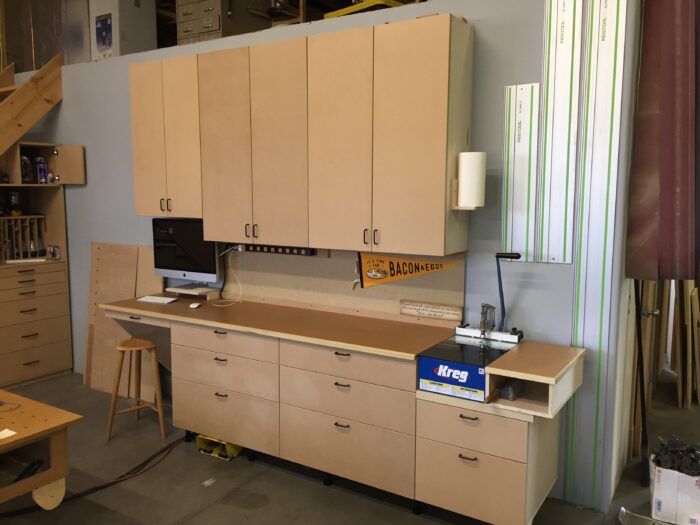
Amongst the 1000 things I do each week for my woodworking business, this week I finished up a shop organization project. It’s a set of upper and lower cabinets against the wall near my workbench. It will house a bunch of tools, clamps, a quasi office, and stuff that was otherwise lying on carts or shoved into some temporary storage solution that wasn’t easy to access. There is nothing more frustrating than having to move 10 things to get the one you need, then move nine more things back to put something away. I shudder to think how much time I have wasted working in a shop that lacked proper organization. I reached a breaking point a couple weeks ago and decided put some time into organizing my workspace. Now with the project completed, I wonder how I lived without it.
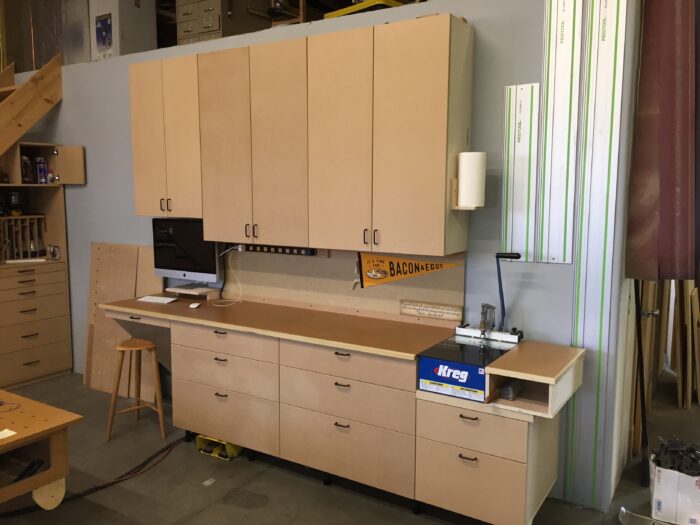
With all that said, I’d like to share a few details from this project that you may find useful in your own shop.
After I came up with a design and materials list, I called up all the local plywood dealers in my area and asked if they had anything they wanted to get rid of. In this case I was able to purchase 10 sheets of 18mm rotary-cut poplar for a really good price. I only needed eight sheets, but the sales rep told me they wanted to clear this from their inventory so he’d cut me a deal. The sheets were little beat up on one corner. It looked like someone bumped them with a fork lift. No big deal; I could cut around that.

I added a computer and a small office space. In my case, this will allow me to answer emails without going into the house. Also, I can share a design from my main computer to the shop computer, which is convenient. I can also quickly order materials. This is a pretty big convenience for my business.
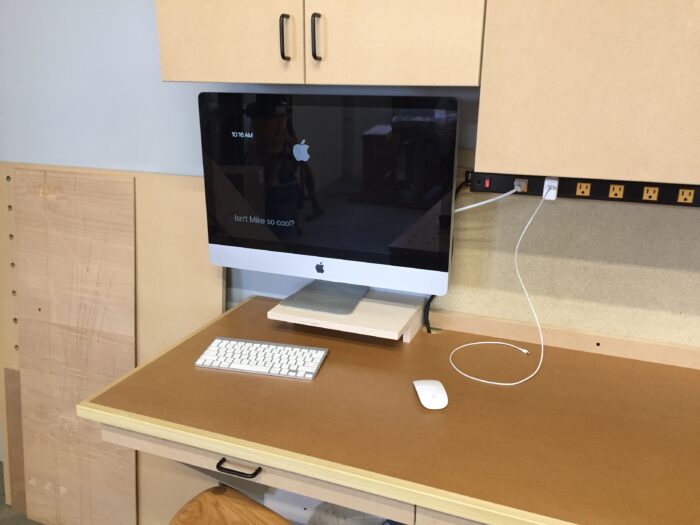
I like to think as specifically as possible, but build as generally as possible. What I mean is I give thought to what I’m going to store in the new cabinets, but I build in such a way that my plan can be changed. For example, I devoted an entire upper cabinet to storage for my most-used clamps, but all of the supports are just screwed to the cabinet. If I decide I want my clamps elsewhere someday, it will take about 20 screws and a few minutes to get me back to an open cabinet.
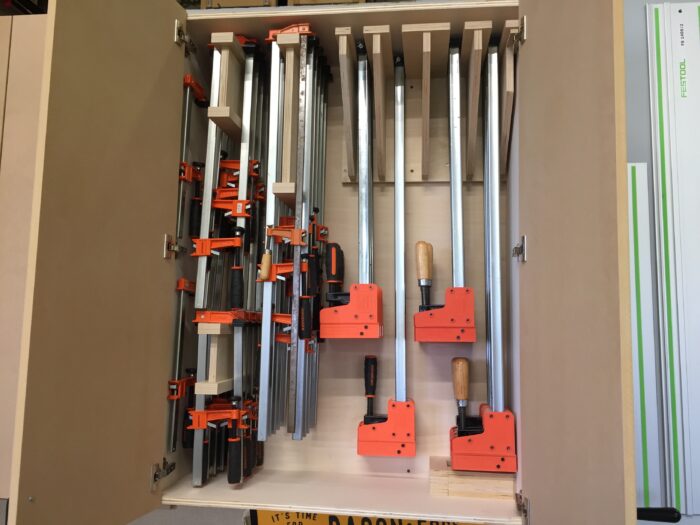
Using 3/4-in.-thick backs for upper cabinets can be helpful. It makes it easy to attach various storage solutions to the cabinet.

Unless I have a specific reason, everything below waist level is stored in a drawer. Drawers are a much better solution than opening a cabinet door, climbing down on hands and knees, and reaching to the back of a cabinet to get that jig that’s occasionally used.

I like to use handles that won’t catch a pocket or tool belt. Another option is to drill finger holes.
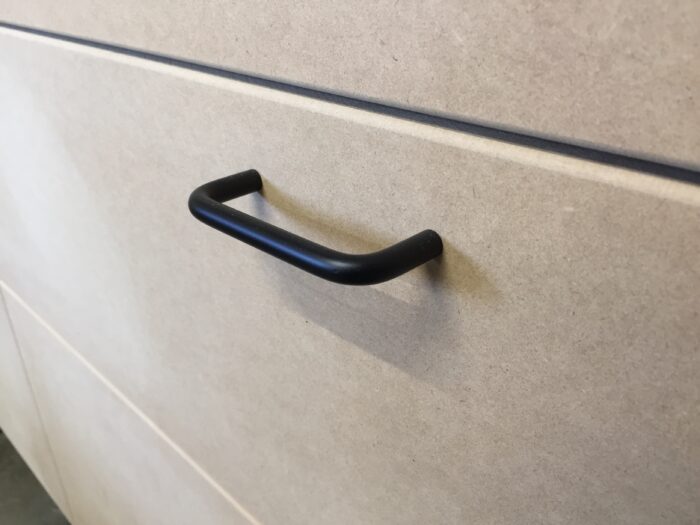
Sometimes it’s a good idea to avoid shelf-pin holes and adjustable shelves that span the width of the cabinet. When it’s necessary to store things vertically, adjustable shelves get in the way. In this case I install a thing that looks like an F. I build these with scrap and install them quickly with pocket screws. They take only a couple minutes to make and it allows me to have shelves and vertical storage.
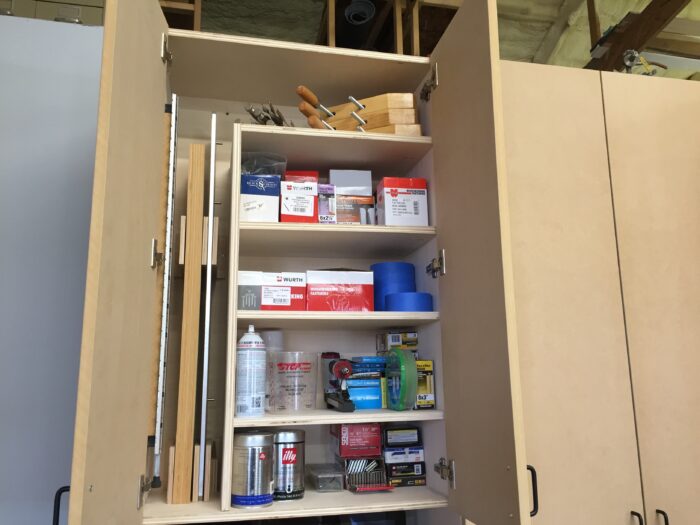
So what is the cost of organization? Well, there are two ways to look at it: This project will cost me X in materials and time, OR not doing this project will cost me X due to working inefficiently. A lesson I apparently need to learn over and over is that shop organization will pay for itself very quickly. Whether you are a pro woodworker or hobbyist, working efficiently is important. We only have so much shop time, so let’s be as productive as possible.
One final quick note: I was on Shop Talk Live with the great and powerful Ben Strano. Give it a listen and let me know what you think.
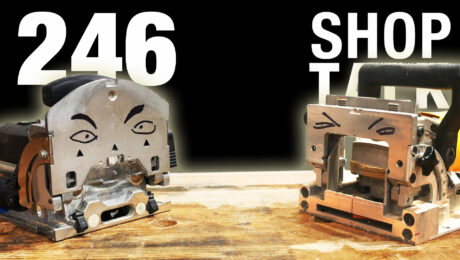 |
STL246: The mighty biscuit joiner vs. the Domino |
Fine Woodworking Recommended Products

Woodriver Rechargeable Desiccant Bag

WoodRiver Router Bit Storage Case























Comments
I understand what Mike's saying but it sounds like he's sacrificed comfort and peace of mind in what should be a peaceful place for functionality and work.
I realize he has a business but it looks like he's lost the enjoyment of woodworking (the fun) and replaced it with rigidity and sterility.
Mikaol
Watch a few Mike Farrington videos. It appears to me that he seriously enjoys what he’s doing. He may just be more orderly than others.
He 100% enjoys what he is doing and the organization is paying dividends!
Knowing where everything is located and that it is easy to get to would give me comfort and peace of mind. Great job.
“[Deleted]”
I listened to / watched the ShopTalk episode and I found it incredibly interesting and useful. Thank you.
Quite a few ShopTalk Live episodes of late that feature only the younger, less experienced FWW staff have seemed more like a chore for the employees who are doing their duty to kill an hour or so on behalf of Taunton / FWW. Not this one. This ranks alongside one of the best episodes that featured Mike Mascelli and Bob van Dyke.
Having followed Mike Farrington through his YouTube videos, I found out that his previous workshop was tiny. The lack of space created the necessity to structure methods that would allow him to tackle his larger projects. Now that he's transitioned into a large work space, (it looks to me like) he's using his incoming projects as an opportunity to intelligently restructure his workflow and structure his new shop at the same time. BTW; his finished projects are clean and quite elegant.
i love wood products...
https://ministorify.in/ this is my website which has good collection of eco friendly products made out of bamboo wood...
Log in or create an account to post a comment.
Sign up Log in